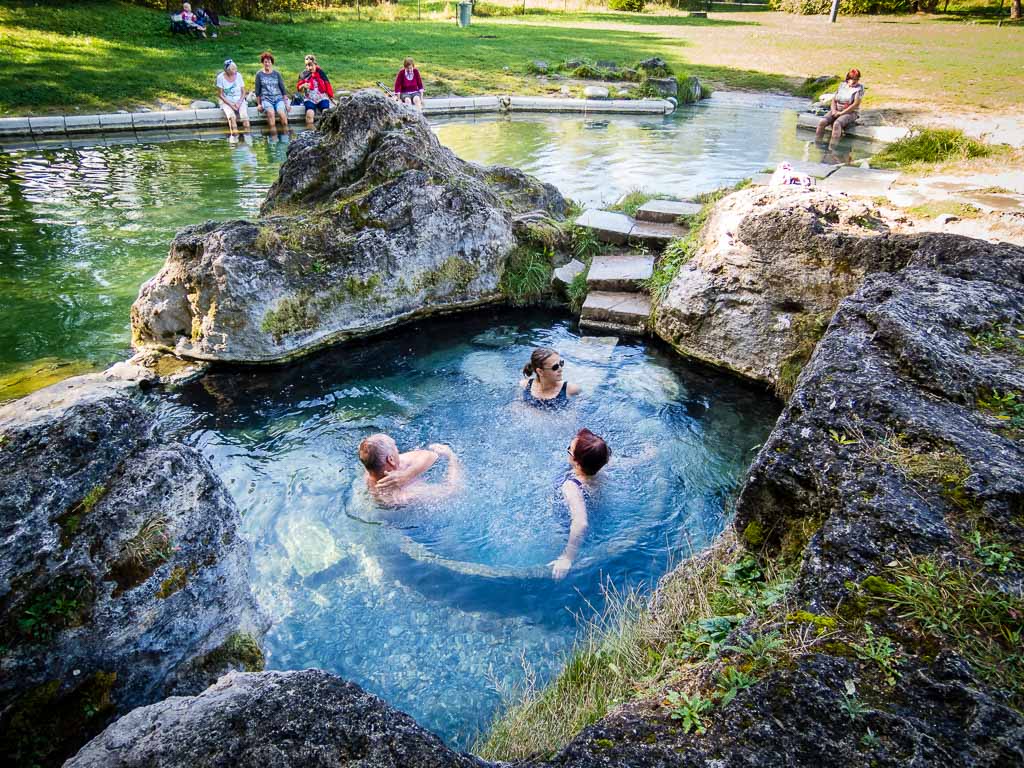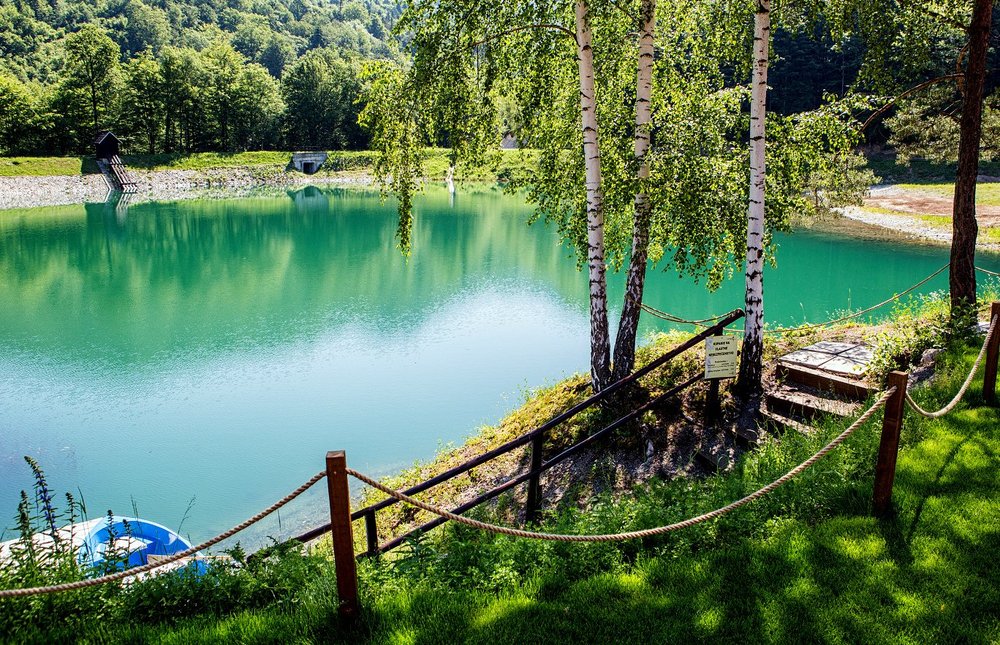
It is true that there is no sea in Slovakia, but you can still find free and original substitutes where you can swim. You can visit Štiavnické tajchy, beautiful Palcmanská maša in the Slovak Paradise and many more places that will save you money.
Medokýš
Medokýš is an old folk name for a mineral spring or water, especially the mineral water of sourish taste. Some localities, where this water springs to the surface, still bear this word as its name.
Probably the most famous one is Medokýš at village Kalameny. The locality consists of the little lakes fed by the water from the thermal spring. The smaller of the lakes is natural, filled with the natural seepage of the thermal water, while the other one was made artificially. More interesting for the visitors is especially the bigger one, as it can be used for swimming throughout the year. The temperature of the local mineral water, which is, in its composition, very similar to the mineral water in the nearby spa Lúčky, is around 33 degrees Celsius. It is characterized by a sulfuric odor and many health benefits, especially concerning the problems of locomotor system or urological and female problems.
Other attractive thing about Medokýš is its beautiful surroundings and its close proximity to the forest. There is an information board for the visitors in the areal and benches.
The locality is accessible along the yellow touristic path from the Kalameny village.
Palcmanská Maša
Palcmanská Maša is the biggest water reservoir in the area of the national park Slovak Paradise. It was created on the upper stream of river Hnilec, in a basin like valley under the southern rocky scarps of Geravy.
The construction of the water reservoir was finished in 1956 and he total area is around 85 hectares. The accommodations recreational and sport centers are situated on its shores. Directly on the lake are the facilities of fish farming.
In the year 1933 was created, close to the shores of water reservoir, village Dedinky, by connecting two other villages – Imrichovce and Štefánovce (name “Dedinky” means literally “villages”).
The Beňatina lake
This turquoise lake is located in a former quarry where a fossil of five meters long fish was found and therefore, the mining was stopped. At the same time the quarry got flooded by the groundwater which created the lake we can see today. It is, in its scenery, quite similar to Plitvice Lakes.
Beňatina is situated in the Soberance county, between villages Soberance and Beňatina.
There is a very interesting thing on the ten meters tall cliffs ; a curious limestone whose auburn color is supposed to represent a five meters tall fossil of the prehistoric whale which seems to be jumping to the water. However, most people think that it looks more like a beautiful, but quite coincidental picture made from a colored limestone.
Kaďa in Liptovský Ján
Kaďa (literally “tub”) is a place which is probably familiar to every visitor of Liptovský Ján. There is a small, natural thermal spring, modified by people to look like a bubble bath or a small pool – the only difference is that the bubbles and natural and they come directly from the depths of Earth. The highly mineralized water offers a nice, relaxing time, which is, by the way, free.
However, the visitor should do something to help that this place continues to be free; and that is protecting the nearby nature and keeping it tidy.
Several pictures of Kaďa/. This spring is called Teplica and it is only one of the thirteen thermal springs in the villages.
Tajchy in Štiavnické Hills

Štiavnické tajchy are lakes situated in central Slovakia. They were built for the needs of local mines and now they represent a tempting place for a swim in a beautiful environment of Banská Štiavnica – a town registered in UNESCO.
As we mentioned, the lakes were constructed for the needs of mines. The center of the mountains was lacking water and mining engineers had to resolve this problem by constructing an ingenious system which is unique and can be found nowhere else in Europe. Its goal was to collect the rainwater and drive it to the water tanks by a complicated system of gutters.
The water in the lakes was later driven to the mines and steel mills, where it powered the mining machines and devices. The majority of the tajchas was created in the 18th century, when S. Mikovíni, M.K and J.K Hell were taking part in the constructions.
There was originally about 60 tajchas, now there is only one third of that number.
The biggest one is Počúvadlianske lake with an area of 11.73 hectare. The highest placed is the Ottergrund lake which lies on the eastern slope of Paradajs with altitude of 939 m.
Štiavnické tajchy are use for recreation and no longer serve their original purpose.